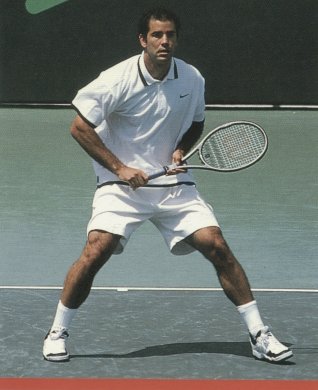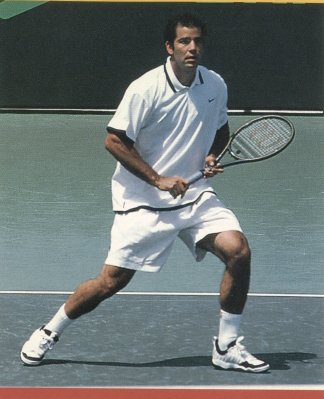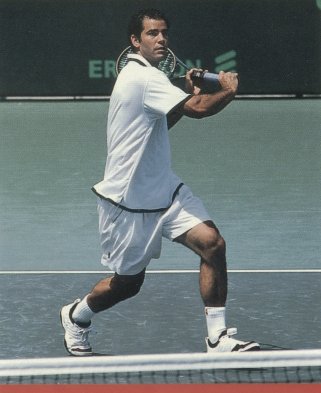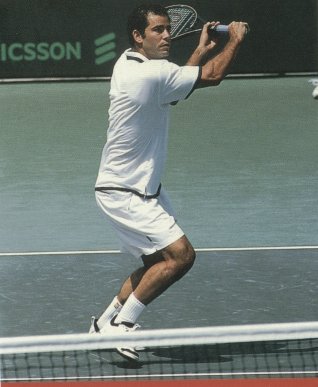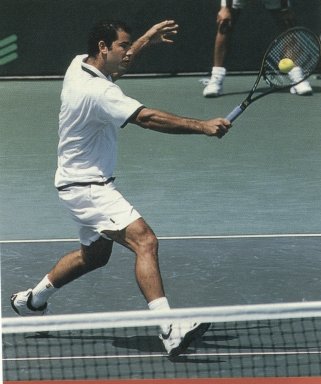Serve and Volley: Backhand







* Explosive First Steps: Both players hit their serves, landed on their front left foot and exploded toward the net with their first few steps. They have started their split step just before contact is made on the return. * Upper Body Posture: Both players shoulders and back are relatively straight; the head is up and they are leaning slightly forward. * Split Step: The feet are not landing together. As they are in the air they have recognized that the ball is coming to their backhand side and they adjust their feet in mid air.
* Split Step: Both players have recognized that the ball is coming to the backhand, so they’ve landed from the split step with the left toe pointed in the direction they are going to move. This allows the players to make a smooth, aggressive move to the ball * Initial Preparation: Both players start their preparation by turning their shoulders. This results in the racquet automatically being taken back.
* Upper Body Rotation: Both players rotate the shoulders without turning their entire body. sideways to the net. Helps store energy in large muscles. * Bent Elbow: Both players bend at the elbow as they take the racquet back. This is important for the racquet control and flexibility, power and mantaining dynamic balance. * Racquet Head: The wrist is cocked, the racquet head is above the wrist and the racquet face is slightly open.
* Upper Body Rotation: Both players continue to rotate their upper body as they move to the ball. This takes the racquet even farther back. * Racquet Preparation: Both players are lining up to address the high, relatively slow return which allows to take a considerable backswing. * Lowering the Center of Gravity: They are bending their center of gravity, which will enable them to explode to the ball.
* Footwork: The players finally start to turn their bodies sideways to the net by stepping forward with the right leg just befoer contact. * Upper Body Posture: It is worth pointing out again. Both players maintain excellent posture and balance as they start the forward swing.
* Contact: Both players straighten out the elbows as they swing the raquet toward the ball. Contact is made well out in front of the body with teh racquet head above the wrist. Then both players open the racquet face significantly on the follow through. * Head: Each man’s chin is up and the head is pointed right at the point of contact. This is critical to maintain balance on the hit. * Front Foot: In both cases the front foot will land after contact. The power is coming from the forward thrust of the legs and the releasing of teh stored energy from the rest of the body.
* Follow-through: Rafter extends his classic follow-through out toward the target area as he opens the racket face. Sampras drops the racquet head, as he appears to be putting more backspin on the ball. * Non-Dominant Hand: It extends backwards as the racquet moves forward. This helps to center the player’s weight between their base (feet) to maintain dynamic balance on the shot. * Footwork: Rafter brings the back foot behind to help keep his body sideways to the net. Sampras is pulled farther out wide and will let his back leg come around the outside before he plants and recovers.
